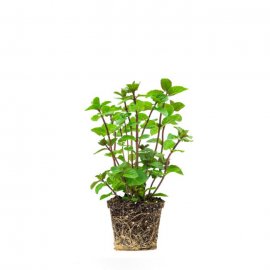Wholesale bio mint production
Sustainable cultivation methods
Since 2000, Simonato Company has been a leader in bio mint production, specializing in the cultivation of organic aromatic plants. As a trusted supplier of wholesale bio mint, Simonato blends tradition with innovation to deliver premium-quality products to its customers worldwide.
Advanced Greenhouse Cultivation for Bio Mint Production
Operating across 40,000 square meters of equipped greenhouses, Simonato leverages state-of-the-art agricultural technologies to ensure optimal plant growth. Key features include:
-
Ebb-and-flow watering system to maximize water efficiency and minimize waste.
-
Under-floor and air heating systems to maintain ideal temperature conditions year-round.
These advanced systems guarantee a sustainable and eco-friendly bio mint production process, meeting the highest industry standards.
Two Sustainable Cultivation Methods for Bio Mint
Simonato employs two precise methods for bio mint production, ensuring high-quality yields and sustainable farming practices.
1. Seeding Method
-
Bio topsoil is used to fill the pots.
-
40-50 bio mint seeds are sown per pot.
-
After germination and repotting, young plants are transferred to specialized greenhouse tanks equipped with an ebb-and-flow watering system.
2. Cutting Method
-
Cuttings are taken from mature “mother” mint plants.
-
The cuttings are placed in small bio topsoil cylinders to encourage root development.
-
Once rooted, they are transplanted into pots for further growth.
For both methods, Simonato carefully adjusts pot spacing to ensure each bio mint plant receives optimal light, airflow, and nutrients, promoting healthy and vigorous growth.
The Historical Significance of Mint
Mint has been cherished for centuries due to its versatility and benefits. The Greeks and Romans used mint as a cleaning agent, a fragrant herb, and a natural remedy. According to Greek mythology, Mintha, the daughter of a river deity, was transformed into the mint plant by Persephone out of jealousy over Hades’ affection.
Why Choose Simonato for Wholesale Bio Mint
Simonato Company is a trusted provider of bio mint for wholesale, serving large-scale retailers with a commitment to excellence. Key advantages include:
-
Customizable Packaging: Tailored solutions to meet specific customer needs.
-
Rapid Order Fulfillment: Orders processed within one hour.
-
Fast and Reliable Shipping: Ensuring fresh and prompt deliveries.
-
Full Product Traceability: Each batch is labeled with a unique identification number, guaranteeing transparency and consistent quality.
As a recognized leader in bio mint production, Simonato continues to provide sustainable, high-quality mint products designed to meet the evolving needs of wholesale buyers worldwide.






